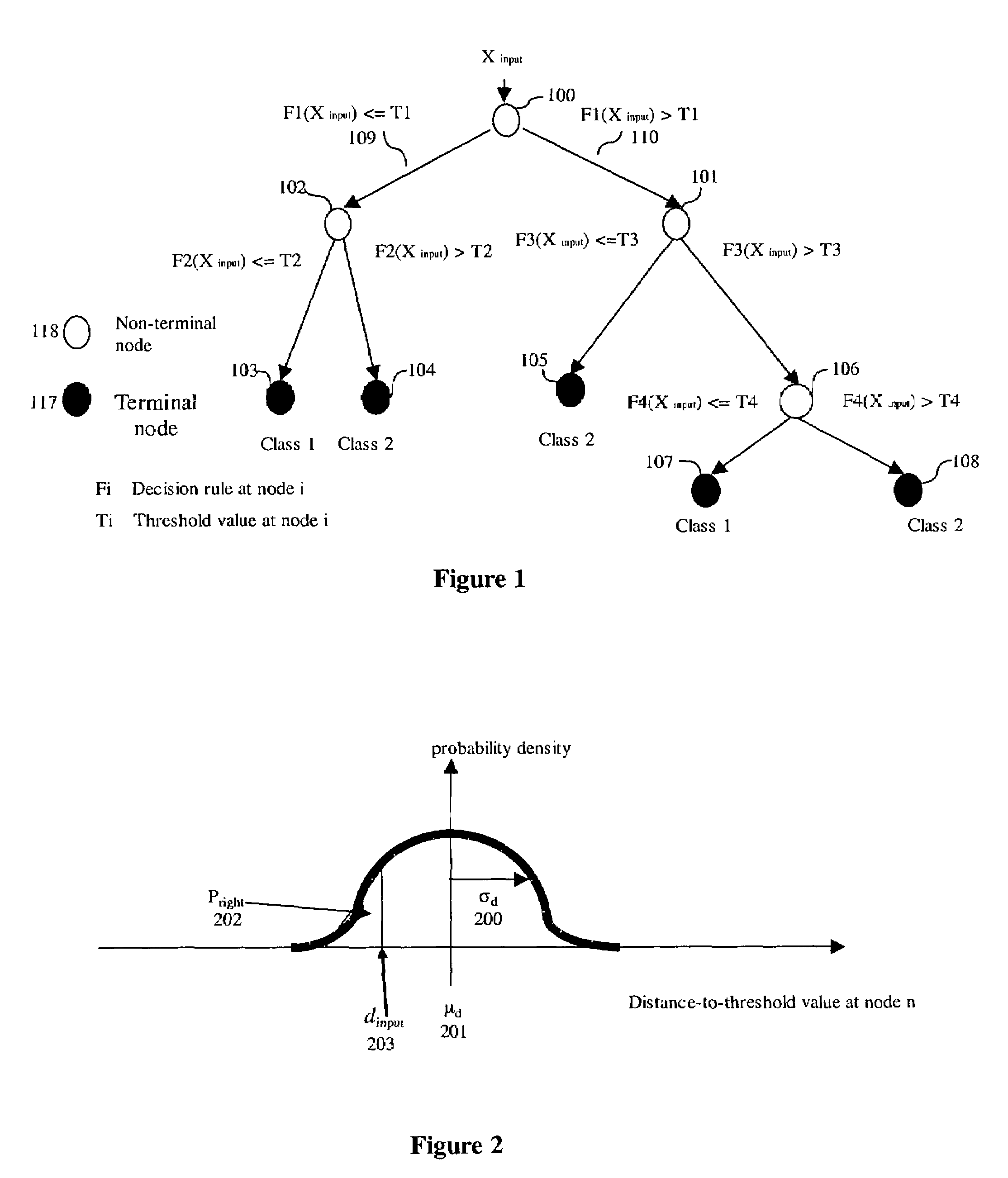Information integration method for decision regulation in hierarchic decision systems
a hierarchical decision system and information integration technology, applied in knowledge representation, instruments, computing models, etc., can solve the problems of increasing accuracy and reducing noise, so as to reduce the amount and quality of training data, reduce noise, and improve decision making
- Summary
- Abstract
- Description
- Claims
- Application Information
AI Technical Summary
Benefits of technology
Problems solved by technology
Method used
Image
Examples
Embodiment Construction
[0015]A decision tree makes a decision through a hierarchical decision structure implemented as a tree. A tree consists of at least one non-terminal node and at least as many terminal nodes as the number of decision outcomes to be decided. Each outcome has associated at least one terminal node, and the non-terminal nodes represent various collections of mixed outcomes. The root node represents the entire collection of outcomes into which a new sample may be decided.
[0016]Almost all decision trees are binary decision trees where each non-terminal node branches out two descending nodes. Without loss of generality, we use binary decision tree classifiers in the descriptions of this invention. Those skilled in the art should recognize that the method of this invention is applicable to other type of decision trees or other types of parametric or non-parametric decision methods.
I.1 Binary Decision Tree Classifier
[0017]FIG. 1 shows a typical binary decision tree classifier....
PUM
 Login to View More
Login to View More Abstract
Description
Claims
Application Information
 Login to View More
Login to View More - R&D
- Intellectual Property
- Life Sciences
- Materials
- Tech Scout
- Unparalleled Data Quality
- Higher Quality Content
- 60% Fewer Hallucinations
Browse by: Latest US Patents, China's latest patents, Technical Efficacy Thesaurus, Application Domain, Technology Topic, Popular Technical Reports.
© 2025 PatSnap. All rights reserved.Legal|Privacy policy|Modern Slavery Act Transparency Statement|Sitemap|About US| Contact US: help@patsnap.com



